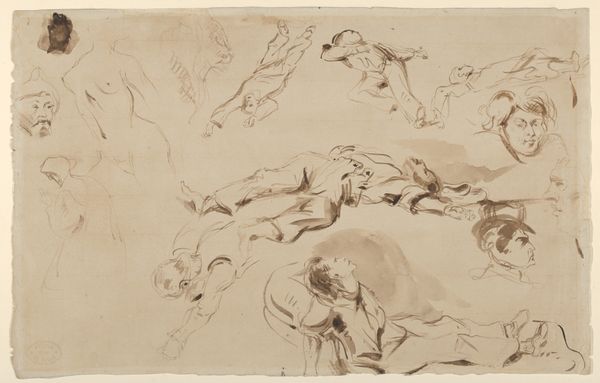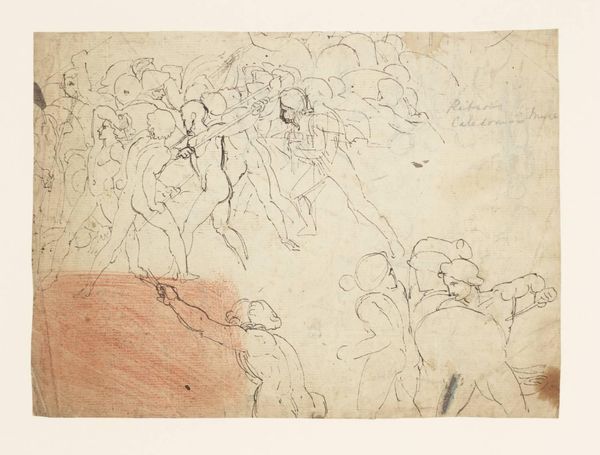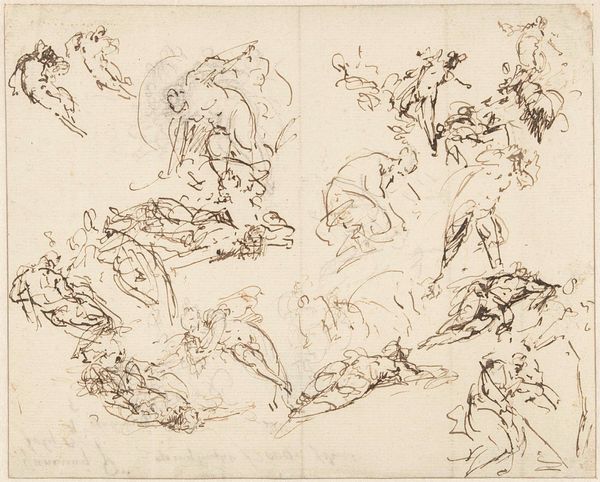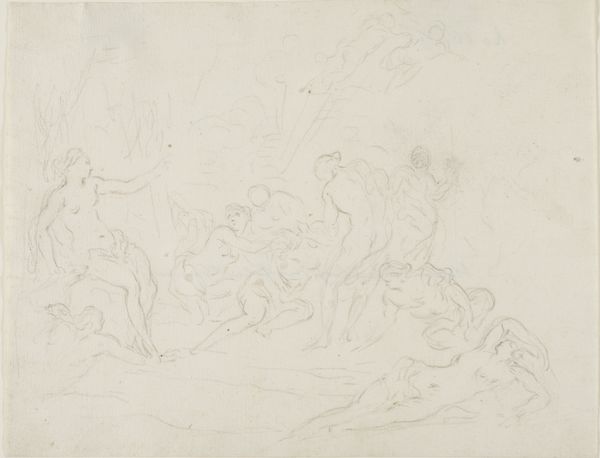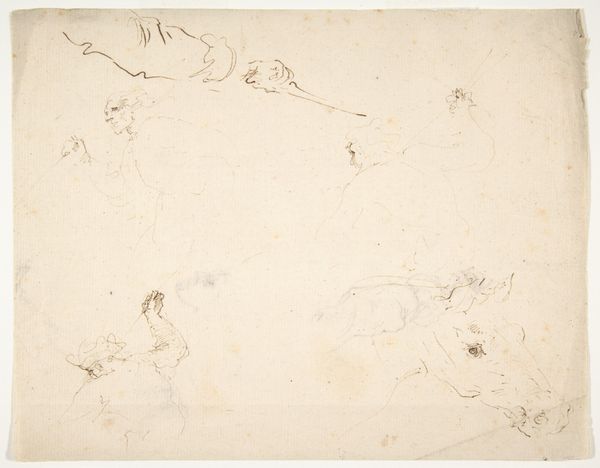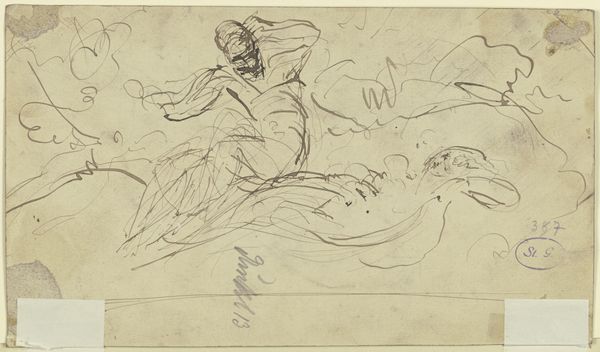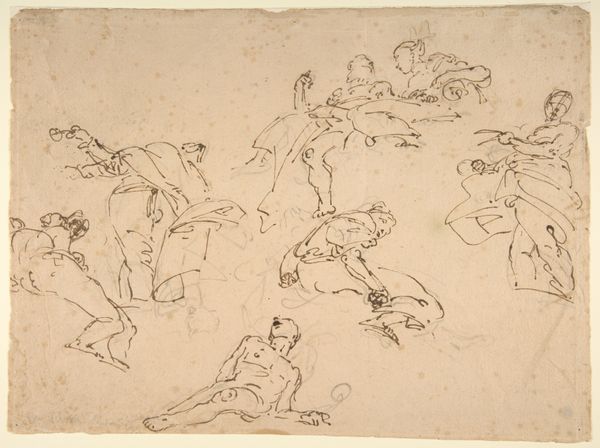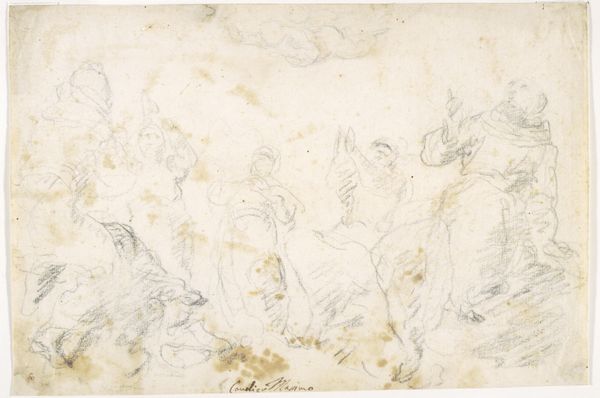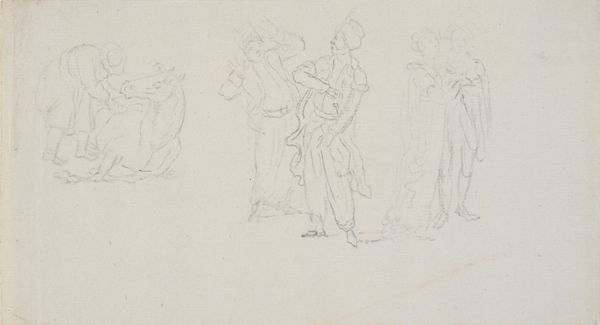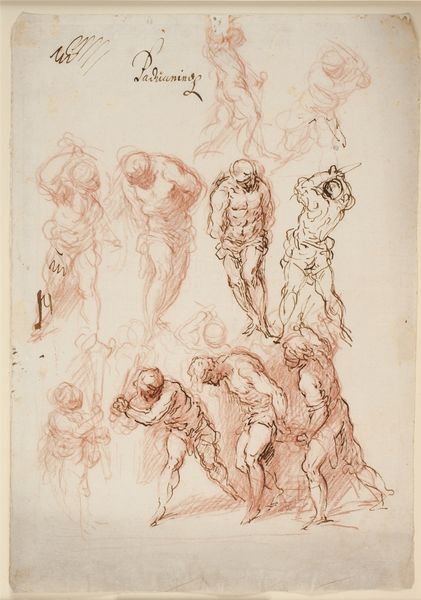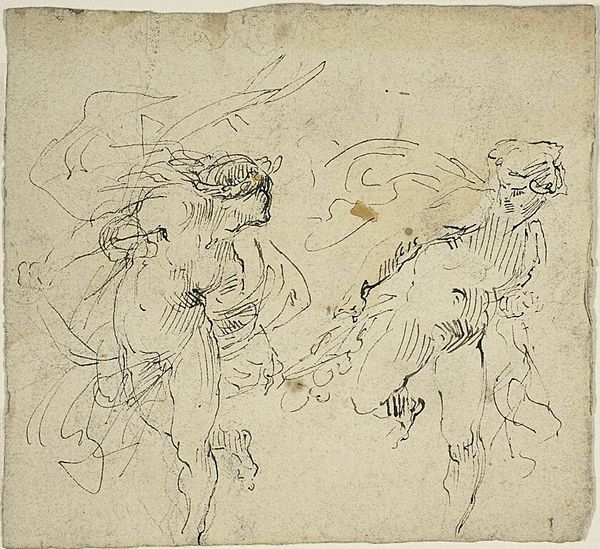
Standing and Kneeling Figures, and Studies of Flying Putti 1565 - 1608
0:00
0:00
drawing, print, ink
#
portrait
#
drawing
#
ink drawing
# print
#
figuration
#
11_renaissance
#
ink
#
pen-ink sketch
#
history-painting
#
italian-renaissance
Dimensions: 7 5/8 x 11 1/4in. (19.3 x 28.5cm)
Copyright: Public Domain
Curator: Looking at this pen and ink sketch, attributed to Francesco Curia and created sometime between 1565 and 1608, I’m struck by how active and chaotic it appears. Editor: Indeed. It has a nervous energy. So many figures sketched in such rapid strokes give the impression of barely contained motion, even frantic reaching. What are your thoughts on its composition? Curator: Well, this work resides at the Metropolitan Museum of Art and is named, “Standing and Kneeling Figures, and Studies of Flying Putti.” The presence of the putti, or cherubic figures, is an interesting element given the tumultuous poses of the larger figures. We see people reaching, crouching, seemingly in various states of either supplication or struggle. Given its time, what stories was Curia engaging? Editor: Renaissance artists were deeply influenced by classical art and literature. They sought to depict not just outward appearances, but also the inner lives and motivations of their subjects. These figures—caught in mid-motion—might be actors from mythological scenes where bodies are subjected to extreme torments. This focus aligns with larger anxieties of a tumultuous world and uncertain spiritual and earthly futures that so profoundly shaped Italian society in this period. Curator: Your emphasis on cultural anxieties opens interesting questions. Consider, if the history of art is largely written from the perspective of powerful elites, then who, really, had the time and money for such pursuits? Were there parallel artistic expressions emerging from below—articulating the hopes, fears, and needs of those marginalized voices? And how might our institutions actively create the conditions to locate them? Editor: Absolutely, an inclusive and critically informed account must consider not only those in power but also those without. However, by bringing historical awareness into consideration with new perspectives we allow for the narratives from traditionally disregarded voices to gain prominence alongside those who had the platform. It allows us to engage with our world in new meaningful ways. Curator: Bringing forward untold narratives also calls for a self-reflexive practice when it comes to the methodologies used in historical analysis. It forces one to be responsible in critically accounting for not only past accounts but where one positions themselves to interpret historical truths. Editor: Agreed. This is why continued efforts to excavate the stories suppressed or ignored can create a far richer and more equitable vision. These quick lines from Curia offer so much, I have many questions as a result!
Comments
No comments
Be the first to comment and join the conversation on the ultimate creative platform.

